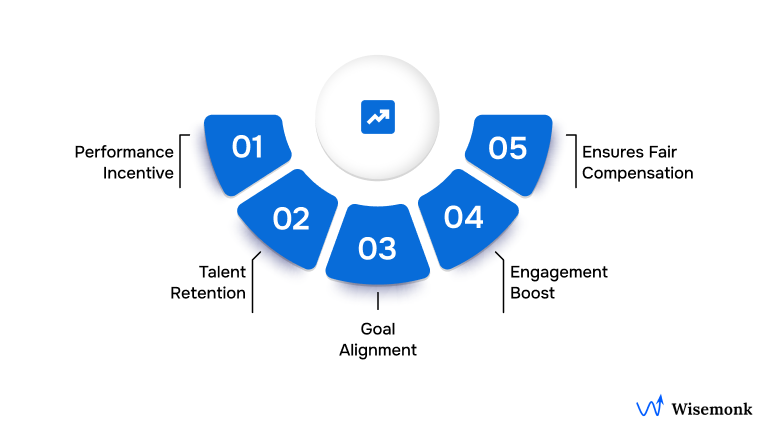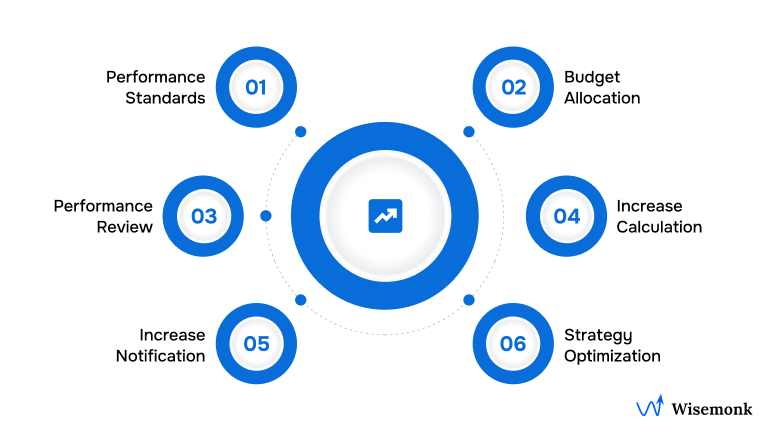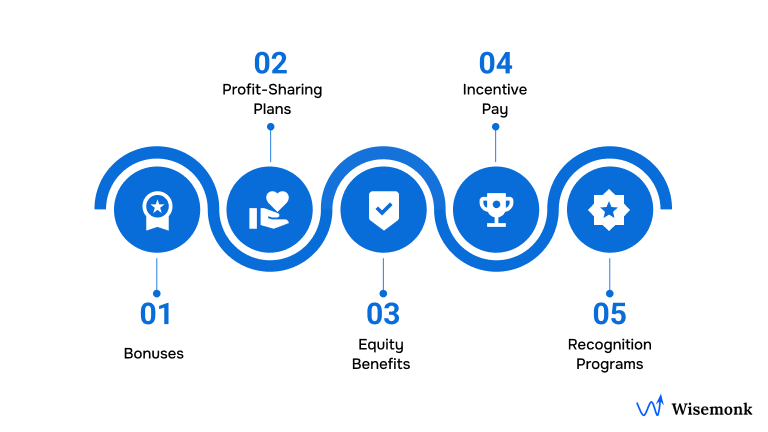Managing compensation structures can be a complex challenge for organizations, especially when trying to balance performance with budget constraints. One key element that can enhance employee motivation and retention is the merit increase, a performance-based pay raise granted to employees based on their contributions.
With the average global salary increase projected to be 4.5% in 2025, down from 5.4% in 2024, merit increases are becoming even more critical to reward top performers while balancing cost control. Merit increases help organizations align compensation with performance, offering a solution to manage both talent and budget.
This blog explores the concept of merit increase, how it works, and why it matters for organizations, particularly when managing a global workforce.
What is Merit Increase?
A merit increase is a salary adjustment awarded based on an employee’s performance, skills, and contributions to the organization. Unlike general cost-of-living raises or market-driven salary adjustments, merit increases directly reward individual achievements and improvements.
Employers use merit increases to recognize exceptional work, encourage continued growth, and retain high-performing talent. These raises often follow performance reviews where managers evaluate how well employees meet or exceed expectations.
By linking pay to performance, organizations create a system that motivates employees to deliver their best and align their efforts with company goals.
Merit increases vary depending on the company’s compensation strategy, budget, and the employee’s level of impact, making them a critical tool for fostering a results-oriented workplace culture.
Is Merit Increase Permanent?
Yes, merit increases are typically a permanent adjustment to an employee’s base salary. Unlike one-time bonuses, merit increases serve as a lasting acknowledgment of an employee's value and dedication, rewarding exceptional performance over the long term.
How is Merit Increase Different from a Salary Hike
A merit increase is based on individual performance and is awarded to recognize outstanding contributions, resulting in a permanent increase to an employee's base salary. In contrast, a salary hike is often a general raise given to all employees, regardless of individual performance, usually to match inflation or market standards.
Understanding the differences between merit increases and salary hikes is essential for recognizing the value they bring to an organization, especially when considering their importance for long-term success. Let's understand how merit increases can contribute to the growth of organizations.
Importance of Merit Increase for Organizations

Merit increases serve as a powerful tool for organizations to drive performance and support strategic goals. They go beyond simply adjusting salaries by rewarding employees who contribute significantly to the company’s success.
Here’s why merit increases matter for organizations:
- Motivates High Performance: Linking pay to performance encourages employees to exceed expectations and stay committed to their roles.
- Retains Top Talent: Competitive merit increases help prevent valuable employees from seeking opportunities elsewhere.
- Aligns Employee Goals with Business Objectives: Merit-based rewards reinforce behaviors and results that support the company’s mission and priorities.
- Enhances Employee Engagement: Recognizing and rewarding efforts boosts morale and fosters a positive workplace culture.
- Supports Fair Compensation Practices: Merit increases ensure that salary growth reflects individual contributions rather than just tenure or market trends.
By effectively implementing merit increases, organizations can maintain a motivated, skilled, and loyal workforce that drives long-term success.
Next, let's look at the steps to implement merit increases in an organization.
Steps to Determine Merit Increase

Merit increases are performance-based raises intended to reward employees' contributions and are calculated as a percentage of current salary. Here is how it is done in an organization:
Step 1: Set Clear Performance Metrics
Before implementing merit increases, establish clear performance metrics for employees. These should be aligned with the organization’s goals and objectives. Metrics could include project outcomes, teamwork, leadership qualities, or personal achievements. Tools like performance management software (e.g., BambooHR, Workday) can help track progress and provide insights into employee performance.
Step 2: Determine the Merit Increase Budget
The next step is to define the merit increase budget based on the company’s financial health and priorities. This step involves allocating funds that will be distributed across high performers. HR software can help track overall compensation and ensure the merit increase fits within budget constraints.
Step 3: Evaluate Employee Performance
Use performance reviews to assess how well employees are meeting their objectives. This can include self-assessments, peer reviews, and manager evaluations. Performance management platforms such as Lattice or 15Five can streamline this process, ensuring consistent and unbiased evaluations.
Step 4: Calculate the Merit Increase Amount
Once the performance evaluations are complete, calculate the merit increase for each employee. This can be done using a simple formula:
Annual raise = Current salary × Merit increase percentage
Payroll software can assist in calculating the correct amount and ensuring accurate disbursement.
Step 5: Communicate the Merit Increase
After the calculations are made, communicate the merit increase to employees. It's important to clearly explain the reasoning behind their raise, highlighting their achievements. This can be done during one-on-one meetings, and HR platforms like ClearCompany or Ultimate Software can help organize and manage these communications.
Step 6: Monitor and Adjust the Strategy
After the merit increase is implemented, continuously monitor the results and adjust the strategy if needed. Assess whether employees are more engaged and if performance improves. Analytics tools such as Microsoft Power BI or Tableau can help track key performance indicators (KPIs) to evaluate the impact of merit increases on productivity.
Emerging Trend in the Merit Pay Evaluation
An emerging trend in merit pay is the integration of innovative evaluation systems, such as peer reviews, holistic performance metrics, and technology-driven feedback platforms, which allow organizations to better align rewards with diverse employee contributions and evolving workplace expectations.
By following these steps, you can effectively implement merit increases, ensuring fair and transparent processes while aligning performance with organizational goals. Now, let's understand the standard merit increase.
Typical Merit Increase in the US
Merit pay, also known as pay-for-performance, is widely used across various sectors in US to reward employees based on their contributions. Merit increases in the US are commonly awarded based on an employee's performance, and the amount varies widely depending on how the employee is evaluated. On average, salary increases typically range between 3% and 4%, but they can go up to 4.6% for high performers.
Merit pay is more aggressive in high-demand industries, especially technology and artificial intelligence (AI). For example, High-tech delivered the largest salary increases in 2024, with employees at all levels receiving a merit increase of more than 3.5%.
In contrast, industries like life sciences, which faced lower deal volumes and decreased valuations, saw more modest increases, with the biggest raises going to executives and management at around 4.7%.
In addition to technology and AI, other industries such as finance, SaaS, and fintech also tend to offer more substantial merit increases as a way to retain top talent.
Drivers Behind Merit Increase Amounts
Several factors shape the size of the merit increases an employee receives. Understanding these drivers helps clarify how organizations determine performance-based pay adjustments.
- Individual Performance: The quality and impact of an employee’s work play the biggest role in deciding the merit increase.
- Company Budget: The overall financial health and salary budget constraints influence how much can be awarded.
- Market Salary Trends: Industry standards and competitor pay rates affect merit increase levels to remain competitive.
- Employee Role and Level: Seniority, job complexity, and responsibility can lead to higher merit adjustments.
- Manager Recommendations: Supervisors’ evaluations and endorsements often guide merit increase decisions.
- Organizational Priorities: Business goals and focus areas may prioritize rewarding specific skills or roles.
- Length of Service: While merit is performance-based, tenure sometimes influences increase amounts.
merit
Several key factors determine the size of merit increases, helping organizations align compensation with both employee contributions and broader business goals.
In the next section, let's explore the calculation of merit pay.
Merit Pay Raise Calculations
Once you have determined the merit increase percentage, calculating the merit pay raise is straightforward.
Here’s how the process works:- Annual Raise = Current Salary × Merit Increase Percentage
- New Annual Salary = Current Salary + Annual Raise
- New Monthly Salary = New Annual Salary ÷ 12
- For example, if an employee earns $80,000 annually and receives a 3% merit increase, the calculations would be as follows:
- Current Salary x Merit Increase Percentage = $80,000 × 0.03 = $2,400 annual raise
- New Salary = $80,000 + $2,400 = $82,400
- New Monthly Salary = $82,400 ÷ 12 = $6,866.66
- This simple method allows HR teams to accurately calculate salary adjustments for their employees. To ensure the merit increase stays within budget and competitive salary ranges, HR leaders can collaborate with compensation managers to create a merit matrix. This matrix provides a clear, structured approach to salary increases based on performance.
In the next section, we will look at the various performance-based incentives beyond merit pay and how they contribute to employee motivation and retention.
- Other Performance-Based Incentives Beyond Merit Pay

While merit pay is a common method for rewarding individual performance, organizations often implement a variety of other performance-based incentives to motivate employees, align their efforts with company goals, and enhance overall engagement. Here are some widely adopted alternatives:
1. Bonuses
One-time financial rewards for achieving specific targets or milestones, boosting motivation and rewarding high performance. They can be individual, team-based, or company-wide, driving short-term focus and immediate results.
2. Profit-Sharing Plans
Employees receive a share of company profits, aligning their interests with organizational success. This incentive encourages long-term commitment and motivates employees to contribute to the company’s performance.
3. Stock Options or Equity Compensation
Stock options or equity compensation enable employees to purchase company shares at a set price, fostering long-term commitment and aligning their interests with company growth, particularly in startups or high-growth businesses.
4. Incentive Pay
A variable compensation linked to specific goals like sales or project completion. Unlike merit pay, it rewards employees for meeting short-term performance targets, motivating focus on immediate objectives.
5. Recognition Programs
Formal acknowledgment of employee achievements, such as awards or public praise. These programs boost morale, engagement, and reinforce positive behaviors, making employees feel valued for their contributions.
Each of these incentives can be an effective alternative or complement to merit pay, offering organizations the flexibility to reward and motivate employees in ways that resonate with different preferences and goals.
With that in mind, it’s important to weigh the advantages and challenges of merit-based pay to understand its overall impact.
Pros and Cons of Merit-Based Pay
Merit-based pay offers a way to reward employees according to their performance, but it also comes with challenges. Understanding both the benefits and drawbacks can help organizations decide how to best implement this system.
Pros
- Encourages High Performance: Employees are motivated to exceed expectations when pay reflects their efforts.
- Supports Talent Retention: Rewarding top performers helps keep valuable employees from leaving.
- Aligns Pay with Contribution: Merit-based increases ensure compensation matches individual impact rather than tenure alone.
- Promotes Fairness: When applied consistently, it creates a transparent system for rewarding achievement.
- Drives Organizational Goals: Linking pay to performance helps focus employees on key business objectives.
Cons
- Potential for Bias: Subjective evaluations can lead to unfair or inconsistent merit increases.
- Can Harm Teamwork: Overemphasis on individual rewards might discourage collaboration.
- Demotivates Some Employees: Those who don’t receive increases may feel undervalued or disengaged.
- Complex to Administer: Requires clear criteria, accurate performance measurement, and ongoing communication.
- May Increase Turnover: If perceived as unfair, it can prompt high performers to seek opportunities elsewhere.
Balancing these pros and cons is essential for organizations aiming to use merit-based pay effectively. Now, let's find out how to make your HR management seamless with Wisemonk.
Transform Your HR Management for Better Results with Wisemonk
As organizations expand globally, managing remote teams becomes increasingly complex, especially when it comes to compensation strategies. Traditional merit increases can only go so far in motivating and retaining talent. To remain competitive, HR professionals need to consider a wider range of performance-based incentives.
Wisemonk helps streamline the HR management process by offering tailored Employer of Record (EOR) services that address these challenges head-on. Wisemonk offers a comprehensive solution for handling compliance issues, payroll complexities, or optimizing compensation for remote teams.
Ready to simplify your global HR management and optimize compensation strategies? Contact us today and explore our flexible pricing options to start your journey with Wisemonk.





%20(5).webp)

